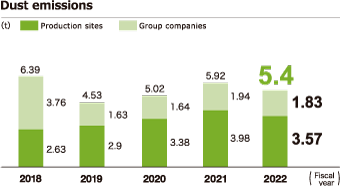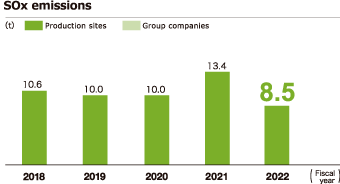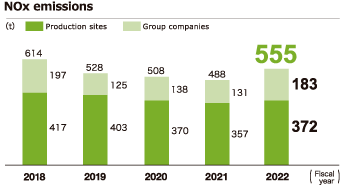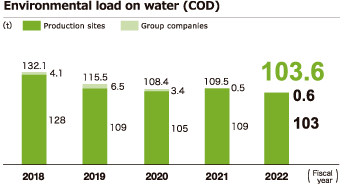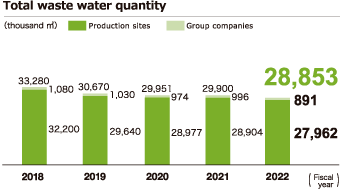Waste Reduction
In addition to a reduction in production activities in FY 2022 at some of our production sites that also resulted in less industrial waste being generated, we were able to reduce the amount of industrial waste from the previous fiscal year level thanks to further progression in efforts to make scraps of externally-treated glass fiber into valuable substances. As a result of these efforts, we were able to achieve an 11% reduction relative to the FY 2019 level and meet the FY 2030 KPI targets. We will continue to promote the recycling of disposed plastic and in-process recycling, while also seeking out new usage methods and making further efforts to reduce waste products.
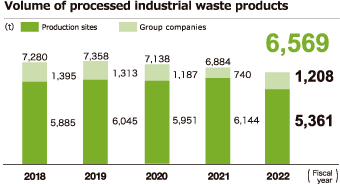

KPIs of Priority Issues (Materiality)
Amount of industrial waste disposed of outside the plants
FY 2030 target: 6,621 t (10% reduction relative to the FY 2019 level)
FY 2022 actual results: 6,569 t (11% reduction relative to the FY 2019 level)
Water Resources
The Unitika Group mostly uses river water as a water source. The used water is purified in the plants and then returned to the environment. We are steadily using less water each year, and in FY 2022 we reduced our water usage by 2% from the previous year’s level.
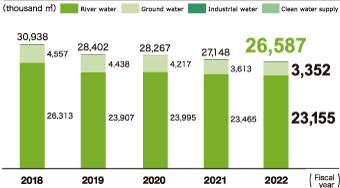

Reducing Environmental Impact on Air and Water
Domestic plants are pursuing measures, such as switching energy from fuel oil to liquid natural gas and stopping diesel power generation, to reduce emissions of dust, nitrogen oxides (NOx), sulfur oxides (SOx), and carbon dioxide (CO2). Unitika Group also works to reduce the environmental impact on water through the appropriate management of wastewater treatment facilities.
In FY 2022, although we were able to reduce the emissions of dust and SOx, emissions of NOx increased due to an increase in the operating time at affiliated companies.
